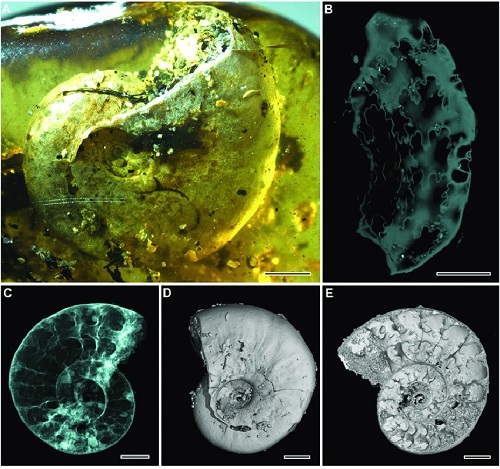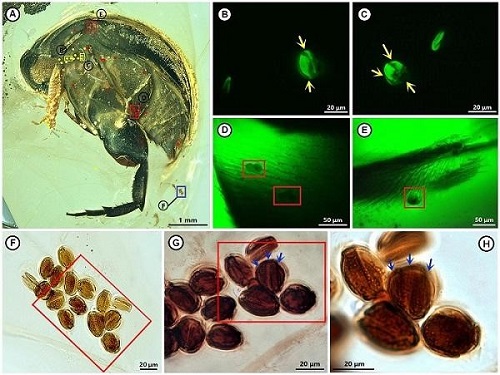An international research group led by Prof. WANG Bo from NIGPAS reported an ammonite alongside a mixed assemblage of terrestrial organisms and a pollinating beetle respectively in mid-Cretaceous Burmese amber (100 million years old). The first discovery indicates that the Burmese amber forest was growing near a dynamic and shifting coastal environment. The amber ammonite also provides supporting evidence for the age of the amber, which is still debated, and represents a rare example of dating using fossils present inside the amber. The second discovery provides multiple lines of evidence, including pollen-feeding mouthparts, pollen-carrying hairs on the body, and zoophilous pollination attributes of the tricolpate pollen, which strongly supports a specialized beetle-angiosperm pollination mode. It shows early evidence of insect pollination of flowering plants and demonstrates that insect pollination of flowering plants existed already at least 100 million years ago.
Reference: YU Tingting, KELLY R., MU Lin, ROSS A., KENNEDY J., BROLY P., XIA Fangyuan, ZHANG Haichun, WANG Bo*, DILCHER D.* (2019) An ammonite trapped in Burmese amber. PNAS, 116: 11345–11350. DOI: 10.1073/pnas.1821292116.
BAO Tong, WANG Bo*, LI Jianguo, DILCHER D.* (2019) Pollination of Cretaceous flowers. PNAS, 116: 24707–24711. DOI: 10.1073/pnas.1916186116.

Ammonite Puzosia (Bhimaites) Matsumoto

The beetle and tricolpate pollen grains
